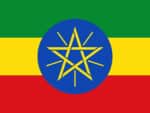 Ethiopia
Ethiopia
Differentiated Service Delivery in Ethiopia
Facility-Level
Coverage
%
Percent of health facilities providing less-intensive DART models.
% In Less-Intensive
Differentiated Treatment Models
%
Percent of people on ART who are enrolled in less-intensive DART models.
Multi-month ART Dispensing
%
Percent of people on ART receiving ≥ 6 months of ART at a time.
DART Model
Diversity
Number of groups for whom less-intensive DART models have been designed and implemented.
Differentiated Service Delivery Implementation in Ethiopia
Ethiopia joined the CQUIN learning network in 2017. Prior to joining, the Federal Ministry of Health (FMOH) had prioritized the scale-up of differentiated service delivery (DSD), launching a national program in October 2016 to focus on a single less-intensive model—the appointment spacing model (ASM) with six-month multi-month ART distribution (6-MMD).
Following an intensive pilot phase, Ethiopia’s ASM initiative was launched in June 2017 and is now available at 1,108 health facilities nationwide, 79 percent of all health facilities providing ART. As of October 2019, more than 194,400 people were enrolled in ASM, representing 87 percent of eligible recipients of care. CQUIN is partnering with ICAP in Ethiopia, FMOH and the Oromia Regional Health Bureau to conduct a qualitative study exploring facilitators and barriers to ASM enrollment.
DSD oversight in Ethiopia is provided by a technical working group of the National HIV Prevention, Care, and Treatment team within the FMOH. Community engagement is also paramount to Ethiopia’s program, with recipients of care engaged in all aspects of DSD planning and support, providing regular feedback through formalized mechanisms, and contributing to the progress of Ethiopia’s DSD program.
These collaborative efforts have contributed towards the planning and rollout of additional less-intensive models launched in 2019, including community-based ART groups (CAGs) and a model tailored for adolescents with HIV. Ethiopia continues to scale up DSD implementation programs and has focused its lens on diversifying models and improving M&E tools to better understand how to reach recipients of care with critical medication.
Given the success of its Appointment Spacing Model – one of the first large-scale models to provide 6-MMD – Ethiopia hosted a south-to-south visit in 2019. CQUIN teams from Eswatini and Mozambique visited to learn more about the initiative and brought important lessons home to their colleagues.
Resources
Taking Differentiated Service Delivery to Scale in Ethiopia
 Loading...
Loading...

Visit ICAP's Website for a broader portfolio of work in CQUIN network countries.
